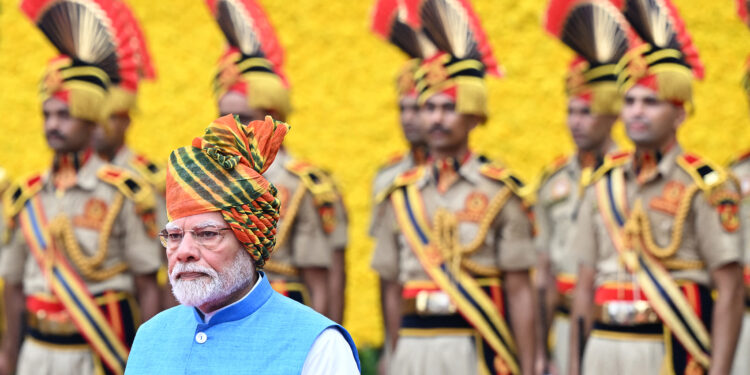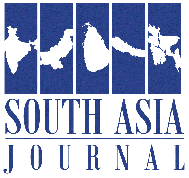 Lieutenant General Abhay Krishna (Retd)
Lieutenant General Abhay Krishna (Retd)
Myanmar’s history has been defined by cycles of military rule, brief democratic openings and prolonged conflict. The military’s claims of electoral fraud in the 2020 elections provided them a pretext for the coup. The coup led by General Min Aung Hlaing crushed hopes for democratic consolidation. The move triggered mass protests, civil disobedience and armed resistance leading to an all-out civil war. The military, thus, responded with severe crackdowns with mass arrests and extrajudicial killings. Cities turned into battlegrounds and rural areas became resistance strongholds. The junta is now engaged in full-scale warfare with the People’s Defense Forces (PDFs) and the ethnic fighters like the Arakan Army, Kachin Independence Army and Karen National Union. However, now the military junta is losing its grip over most of Myanmar. The junta’s inability to govern effectively, coupled with international sanctions, has only further emboldened the resistance forces.
China: Playing a double game
China remains Myanmar’s biggest external player, balancing its economic interests and strategic ambitions. China officially backs the military junta to safeguard its investments made in Myanmar, but at the same time it is also covertly supporting the ethnic rebel groups to ensure its Belt and Road Initiative (BRI) projects, including access to the Indian Ocean, remain secure. This dual strategy, thus, clearly demonstrates that regardless of who prevails in Myanmar, China’s influence will remain intact.
The country’s strategic location makes it a crucial player in Indo-Pacific security, trade and energy corridors. So, the question now remains: Who holds the key to Myanmar’s future? Interestingly, China is very smartly playing both sides, ensuring that its strategic projects remain intact. While China maintains ties with the military junta, it is also hedging its bets by engaging with ethnic armed groups to safeguard its investments.
Bangladesh: A shift towards Islamism
While Myanmar burns, on the other hand Bangladesh’s shift towards a more hardcore Islamic identity is turning into a quieter yet equally concerning situation for India. Sheikh Hasina tried her best to maintain a complex relationship with Islamist groups and contained the terrorist groups. Now, there is a growing influence of hardline Islamic preachers on social media platforms. Radicalization fueled by online propaganda and extremist narratives has led to an increase in intolerance toward secular and liberal voices in Bangladesh. We have noticed that bloggers, writers and activists critical of Islamism have been increasingly targeted and even assassinated.
Further, on assuming power, the Yunus caretaker government immediately took certain actions like lifting a ban on the Jamaat-e-Islami party that was imposed under an antiterrorism law. Reportedly Islamist terror outfit operatives have entered West Bengal and are recruiting and setting up modules in the Indian state. The state police claimed that the terror outfit Ansarullah Bangla Team (ABT), linked to the Jamaat-ul-Mujahideen Bangladesh (JMB), is essentially targeting the “chicken’s neck” of India, also known as the Siliguri corridor, the only land connectivity with North East India.
US game plan
In the complex landscape of South Asia, the United States appears to be pursuing a strategy that involves establishing controlled regimes in both Myanmar and Bangladesh to further its interests, essentially as a counterbalance to China’s growing influence in the region. This approach aims to create a political environment that can effectively manage the dynamics of Chinese expansion while simultaneously also ensuring that India does not advance too quickly on the global stage.
One of the key components of this strategy also appears to foster a pocket of Christian influence that spans parts of Myanmar, particularly in Chin State, as well as regions in India such as Manipur and Mizoram, extending into the Chittagong hills of Bangladesh, calling the entire region “Zo Nation”. This initiative will also serve to reshape the socio-political fabric of these areas, potentially creating a significant counterweight to Islamic influence.
Additionally, there could be efforts directed to incite societal conflict between Islamist groups and the broader Islamist community in Bangladesh and neighboring West Bengal. Such conflict could lead to increased violence and instability, effectively tying down India’s efforts to implement its Act East Policy aimed at developing this region as a major exporting hub.
Smart statecraft over force
A fear, therefore, now prevails that increasing radicalization in Bangladesh will fuel extremism in both India’s Northeast and Myanmar’s Rakhine State, thereby affecting regional stability. A radicalized Bangladesh could align itself more closely with countries like Pakistan and Turkey, thereby challenging India’s influence in the region. The unchecked conflict in Myanmar is already spilling over into India’s border states, thereby impacting internal security.
India’s response to Bangladesh’s ideological drift and Myanmar’s instability is rooted in strategic patience rather than military action. Instead of direct confrontation, India is working with key global players including the US, Saudi Arabia and the UAE, who share concerns about the rise of radical Islamism. By engaging these countries to put pressure on Bangladesh’s radical factions, India aims to steer Dhaka back towards its secular roots while safeguarding its own security interests
While China plays both sides in Myanmar, India must ensure that it does not lose ground by hesitating to act. The security and stability of the four northeastern states of India bordering Myanmar—Arunachal Pradesh, Nagaland, Mizoram and Manipur—and securing its investments in the region are of prime importance to India. For that India must reach out to the rebel groups in consultation with the military junta to extend non-lethal humanitarian aid and help relocate and settle the refugees. By extending non-lethal assistance, India will uphold its regional leadership, counter China’s unchecked influence and reinforce stability along its eastern frontier without direct military involvement.
A military intervention in response to these challenges could inadvertently play into US hands, thereby hindering India’s progress on the global economic stage. Conversely, inaction may allow Pakistan to exploit the situation politically, particularly in Bangladesh, while also facilitating the expansion of Christian influence with a specific political agenda in northeastern India through Myanmar. To address these multifaceted threats, therefore, it may be prudent for India to consider leveraging intelligence and covert operations. This approach could mirror tactics employed by Pakistan in Baluchistan and Afghanistan, allowing India to navigate the geopolitical complexities without overt military engagement.
source : irrawaddy
